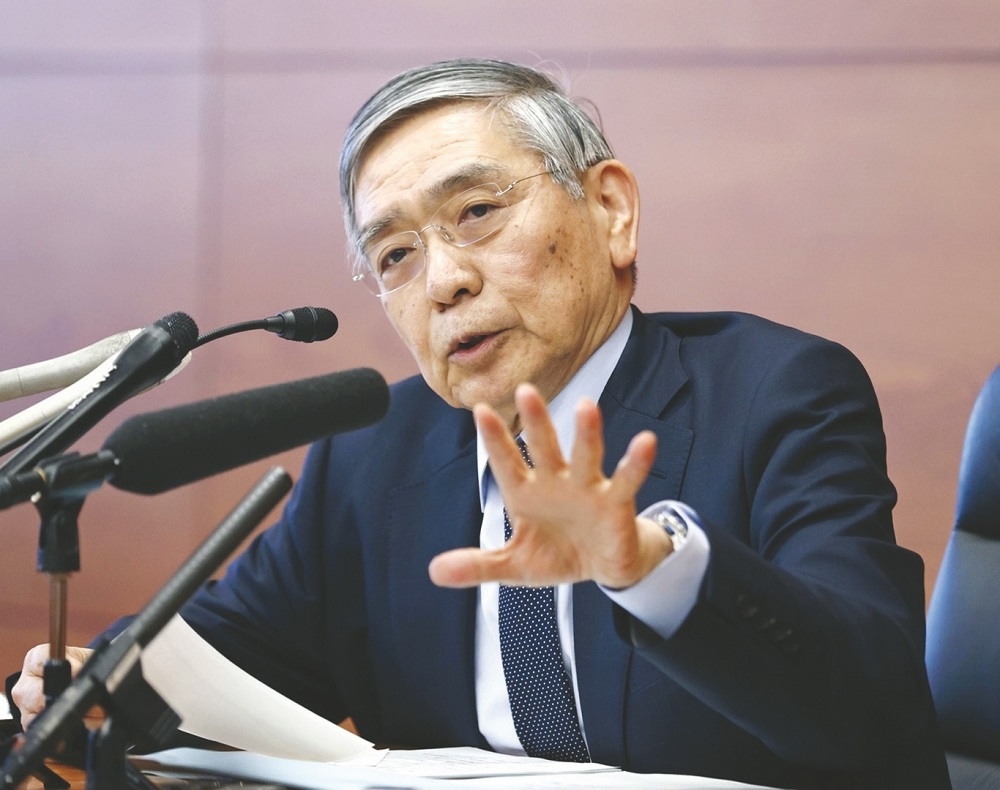New approaches of central banks
In recent years, major central banks have decided that their methods for achieving their mandates left something to be desired. The Fed changed its modus operandi in 2020 and, in 2021 the ECB followed suit. Now it looks as if it might be the Bank of Japan’s turn.

BoJ Governor Haruhiko Kuroda
Central banks usually have their mandates passed down to them by governments. Some, like the Bank of England, are given a specific target (2% inflation) while others are asked to achieve price stability (and sometimes full employment) and the bank itself can decide which “number” dictates price stability (which is usually 2%, of course).
If central banks don’t think they are achieving the target as they would like they can tweak their strategies. In recent years the Fed and ECB have done this. The former started to target ‘average’ inflation in the summer of 2020, with the implicit license to run the economy ‘hot’ and overshoot 2% for a time before tightening policy.
In the event, inflation has soared far beyond the levels consistent with any sort of averaging requirement and many might argue that this new approach caused the Fed to take its eye off the inflation ball. The ECB’s strategy change was also designed to target or accept a higher level of inflation than before. Its 2021 change was geared around a 2% target for inflation rather than the “close to, but below 2%” target that had existed before.
Of course, it too has encountered a level of inflation that’s way beyond anything that’s consistent with the new target and now it is paying the price, as is the Fed, with sharp rate hikes. So, the irony of the situation was that these central banks made policy changes, which were designed to alter the fact that inflation had been too low in the past, at the very point that inflation started to surge. They went from wanting more inflation to now wanting far less.
What about the Bank of Japan? For it looks as if it could be the next to get a monetary policy makeover. But one difference here is that the BoJ works out its preferred policy strategy with the government. The last time it did this, in 2013 the aim was to lift inflation up to the 2% target as quickly as possible.
Unfortunately, “quickly as possible” has actually taken nearly 10 years and, even now, the Bank argues that the 4% annual core rate is overstating price pressure and will soon revert back to below 2% again. If that’s correct, then it would seem that the BoJ needs a new mandate to make "as quickly as possible" even faster. But that’s the opposite of what’s been proposed this week by an important group of academics and business leaders. One of these is Yuri Okina, Chair of the Japan Research Institute and seemingly a leading contender for either Kuroda’s job when he steps down in April, or one of his deputies. This proposal actually suggests making the inflation target a longer-term target and not one to be achieved ‘as quickly as possible’. For it is argued that this policy has achieved little other than huge BoJ bond holdings and a distorted JGB market.
>> What about the monetary policy targets of some central banks?
The other key plank of the proposal seems to be to focus more on the country’s growth potential. As one member puts it, Japan can’t achieve a sustainable level of inflation of 2% when the country’s productive potential is under 1% (the OECD puts it at just 0.25% for 2023).
Mr. Steve Barrow, Head of Standard Bank G10 Strategy, believes that switching to a longer-term inflation aim and focussing on growth could enhance decision making at the Bank, but we clearly don’t know whether the government and BoJ will adopt such a plan. The lesson from others that have switched their strategies seems to be that events can soon catch you out. The BoJ will have to be careful in case any new governor and change in policy strategy that tightens financial conditions because of high inflation right now, does not fall victim to a sharp fall in inflation in the future.
For now, though, the market is likely to remain on its guard for signs that the post-April policy setting will be tighter than it is today. This seems a fair bet. But it might also be a fair bet to say that, just like the Fed and ECB, the strategy change may leave policymakers looking a bit foolish a year, or two, down the line.








